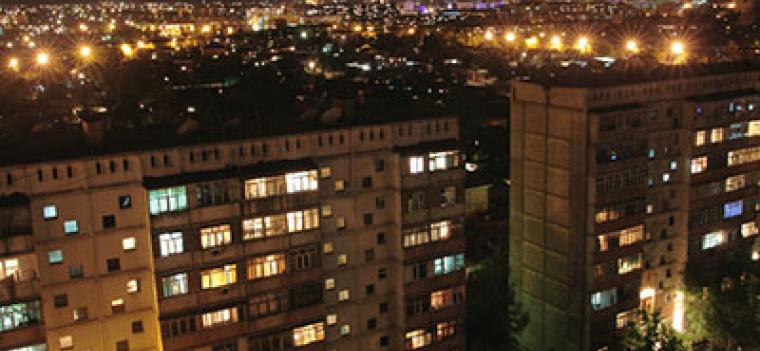News
- Rapid urbanization in the Kyrgyz Republic presents many challenges as infrastructure and services need to be improved to accommodate increasing populations.
- A US$14.4 million Urban Development Project supported by the World Bank aims to improve the quality of municipal services and pilot energy efficiency and seismic resilience retrofits in existing infrastructure.
- ESMAP support is strengthening the capacity of local municipalities to plan and implement energy efficiency activities and to prepare related investments.
The Kyrgyz Republic is one of the poorest countries in the Eastern Europe and Central Asia region. Over the past few years, the country has experienced rapid economic growth, with poverty decreasing from 62% to 32%. Expanding cities are becoming major centers of productivity compared to their rural counterparts. If managed well, these urban centers can play a key role in ensuring continuous development in the country.
As cities grow, the challenge will be to ensure adequate infrastructure and services to accommodate the needs of urban dwellers. However, municipalities responsible for the provision of basic public services such as water supply, solid waste collection, street lighting, and social infrastructure have been unable to provide quality services due to inadequate institutional capacity and lack of resources. Service gaps are concentrated mostly among the poor and disproportionately affect women and children.
Since the fall of the Soviet Union, infrastructure in the Kyrgyz Republic has suffered from decades of under-maintenance, as municipalities have been unable to raise enough revenues to cover costs and improvements. The majority of public buildings were constructed without energy efficiency considerations, leading to higher operating costs and low levels of comfort, especially in extreme cold. Electricity outages during the winter caused by inefficient electric heaters result in under-heated public building, including schools and kindergartens. On average, it is estimated that around 20-30% of the heat demand in urban buildings remains unmet every year due to the high heat loss and unreliable, insufficient, or unaffordable heat supply.
Furthermore, even though the country is located in a region with high seismic activity, most houses and public buildings are not earthquake proof. As a matter of fact, studies have shown that more than 80% of schools and kindergartens in the country have low seismic safety ratings.
Leveraging a long and successful engagement in the country’s municipal services sector, the Government has partnered with the World Bank on a US$14.4 million Urban Development Project. The recently approved project aims to improve the quality of municipal services and pilot energy efficiency and seismic resilience retrofits of infrastructure in participating towns. Specifically, the project will improve water supply, help switch towns to more energy-efficient street lighting options, improve solid waste collection, as well as introduce seismic safety and energy efficiency retrofits to existing social infrastructure. The project will be the first project to pilot combined seismic and energy efficiency retrofits in the country.
To address local capacity constraints, the World Bank looked to its Energy Sector Management Assistance Program(ESMAP) to provide a US$250,000 grant to help municipalities plan and implement energy efficiency activities. This support is covering cross-sectoral energy efficiency assessments, training for local service providers on how to conduct energy audits and for construction companies on the design and implementation of energy-efficient retrofits.
The project represents the first urban sector investment that ESMAP helped shape using its Tool for Rapid Assessment of City Energy(TRACE) during project preparation. By applying TRACE diagnostics, ESMAP helped the municipalities develop energy savings plans and outline an investment pipeline. Along this work, data were collected for the pre-feasibility studies to perform thermal retrofits in schools and kindergartens along with deploying renewable energy sources. Moreover, based on the results, street lighting infrastructure will be upgraded to energy efficient LED technology in two cities.
Project investments will include retrofitting buildings to improve their energy performance, increase comfort levels and strengthen their seismic resistance. This component of the project has been designed as a pilot aimed at demonstrating the benefits related to energy efficiency, including energy savings, cost savings, reduction of electricity peak demand and social co-benefits, such as improved indoor temperature and comfort and an improved learning environment. It is expected that this pilot will raise awareness about the importance and feasibility of energy efficiency and seismic safety and pave the way for future, scalable programs.
Learn more about the ESMAP Energy Efficient Cities Program
